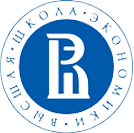The paper stresses that globalization has progressively transformed corruption from strictly domestic affair into a hurdle to effective international cooperation. As a consequence, international agreements containing anti-corruption provisions, including transnational corruption, have gradually began to appear:
- the OECD Convention on Combating Bribery of Foreign Public Officials in International Business Transactions,
- the United Nations Convention against Corruption (UNCAC),
- the Inter-American Convention Against Corruption,
- the Criminal Law Convention on Corruption,
- the Civil Law Convention on Corruption,
- the African Union Convention on Preventing and Combating Corruption, and
- the Arab Convention Against Corruption.
Additionally, countries have started to establish provisions on the fight against transnational corruption: in 1977, the United States adopted the Foreign Corrupt Practices Act; in 2010, the United Kingdom passed the Bribery Act; and in 2016, France enacted Law No. 2016-1691 “On Transparency, Fight against Corruption and Modernization of Economic Life” (Loi n° 2016-1691 du 9 décembre 2016 relative à la transparence, à la lutte contre la corruption et à la modernisation de la vie économique). For countries to exchange experience dedicated formats such as the G20 Anti-Corruption Working Group have been created and thematic events, including the anti-corruption summit of heads of states and governments, G20 anti-corruption ministerial meetings, the UN General Assembly special session against corruption and others, have been organised.
The gradual understanding of the role of enablers (banks and other similar entities) in concealing proceeds of corruption pushed international financial institutions to join the fight against corruption, even though they previously considered it as an exclusively political problem not related to the financial system operation.
Therefore, anti-corruption is now an important area of international cooperation that enjoys broad participation.
However, despite all the effort of the international community, the level of corruption is still high, which is due to the following factors:
1) poor law enforcement: even if the provisions foreseen by international agreements are in place, countries can make no significant progress in countering corruption because of:
- lack of political will;
- scarce human and financial resources;
- poor coordination between public bodies and insufficient cooperation with international organisations;
- failure to use the mutual legal assistance (MLA) mechanisms with regard to large-scale and complex financial crimes, including corruption;
- inadequate enforcement of provisions of anti-corruption conventions incorporated into domestic law without due consideration of national legal and cultural characteristics;
- difference in domestic standards of proof, which can impede international investigations etc.;
2) focus on specific corruption offences such as bribery, including its transnational form, and the lack of provisions against other manifestations of corruption, i.e. state capture, kleptocracy, favouritism, continued fulfillment of functions in a conflict-of-interest situation, dishonest lobbying and funding of electoral campaigns;
3) fixation on a specific type of corruption in developing anti-corruption measures: petty or grand, active or passive, domestic or transnational corruption, corruption in poor or rich countries; the authors of the paper stress that corruption is a single whole, and the fight against it must be consistent and comprehensive;
4) the lack of proper regulation of asset recovery in the jurisdictions from which the proceeds of crime originate and lack of compensation of damage to the victims of corruption. In spite of the fact that between 2010 and 2021 61 countries reported they had participated in cross-border investigations related to asset recovery with other 36 countries reporting they had repatriated the assets recovered, the authors consider the relevant mechanism as insufficient. In particular, the provisions on asset recovery lack in almost all international agreements except for the UNCAC; as a result, most countries lack the necessary legal framework. The issue of compensation of damage to the victims of corruption, which has appeared in the international agenda relatively recently due to its complex character (the authors point out that in most cases it is difficult to identify the victim of corruption; additionally, it is unclear how to act in a situation where it is the participants of a corruption scheme that claim damage), remains unresolved in a proper manner neither at the international nor at the domestic levels;
5) poor quality of official statistics on anti-corruption performance, which distorts corruption perceptions.
In order to mitigate the impact of the abovementioned factors on the effectiveness of the fight against corruption, the ILA experts have come up with the following recommendations:
1) Increased international cooperation.
The authors stress that the following elements have particular importance for continued effective fight against corruption:
- enhanced cooperation between law enforcement bodies of the countries traditionally on the supply side and those on the demand side: the paper highlights that such cooperation between the bribe-paying countries is already in place, but there is practically no coordination between the bribe-paying and the bribe-taking countries;
- enhanced cooperation between the public and private sectors also on the matters of voluntary disclosure of violations, subsequent cooperation with the investigation and conclusion of pre-trail agreements;
- harmonization of speeds of law enforcement in different countries also though the mechanisms of pre-trial resolution: the paper underlines that elimination of procedural obstacles, primarily, the achievement of the same speed of law enforcement has considerable importance for facilitating international investigations;
- increased efficiency of the MLA procedures also by establishing a dedicated structure to explore the potential for improvement (for example, on the basis of the ILA commission);
- specification and harmonization of the provisions of existing international agreements and development of a general guidance on how to incorporate their provisions into domestic law.
2) Increased transparency of bodies and organisations.
Transparency of public bodies, major companies and other potential subjects of corruption has an important role in uncovering corruption offences.
In this context, the ILA experts define several key areas where transparency should be enhanced in the first place:
- government loans and management of sovereign wealth funds, including transparency of public debts transactions in emerging markets, for example, by: 1) imposing the obligation to disclose information on loans within 30 days from the signing of contracts and to provide access to this information to the general public on financial institutions, 2) obliging creditors to ensure transparency and accountability of government debt contracting process, 3) implementing control procedures by state oversight authorities and civil society organisations etc.;
- the payments made by private companies in their business undertakings: transparency can be increased by obliging corporations to publicly disclose these payments especially if they operate in the industries with a high level of risk, such as manufacturing, mining, oil and gas and pharmaceutical;
- information on assets and interests: in spite of the fact that over 160 countries have already introduced the systems for disclosing such information, the StAR Initiative says that few systems of asset and interest declaration are efficient. The ILA experts suggest facilitating access to asset, interest and/or income declarations of officials for the general public by publishing them on dedicated open platforms as a measure to enhance the efficiency of their use;
- information on financing of political parties: the sources and amount of funds donated directly to political parties, certain candidates or the organisations supporting them must be transparent. These requirements must be applicable also to the non-governmental organisations in the countries with high risks of corruption, because they can be used as a channel for money laundering;
- public procurement and other types of public-private partnership: it is possible to enhance transparency in this area, for instance, by using the High Level Reporting Mechanism (HLRM) designed to detect the facts of extortion of bribes and associated practices.
3) Corruption prevention.
The ILA experts highlight that prevention is an important component of the fight against corruption. However, given that it is hard to assess the direct benefit from corruption prevention measures, many countries push this matter in the background.
To address the problem, the authors consider it necessary to implement, as a minimum, the mechanisms of anti-corruption examination of every draft legal act and contracts concluded by legal persons with the State.
4) Stop sheltering illicit proceeds.
The authors propose the following measures to counter the concealment of illicit proceeds:
- eliminate tax havens also by enhancing the responsibilities of FATF to deal with them;
- regulate the activities of banks and other financial institutions, lawyers, tax consultants and external auditors that act as “enablers” in receiving, concealing and using proceeds of corruption;
- enhance transparency of beneficial ownership by providing law enforcement and the general public with access to the registries of beneficial owners and extend the rules regarding beneficial ownership to the broadest range of corporate vehicles possible;
- confiscation of unexplained wealth without proving criminality.
5) Stakeholders’ involvement.
The authors stress that the involvement of all stakeholders in the fight against corruption is an important prerequisite. These stakeholders are:
- the private sector: for instance, companies can participate in the fight against corruption in certain industries through collective action (by concluding collective agreements) aimed at setting integrity and fair competition standards;
- civil society and the population at large that can contribute to preventing and detecting corruption offences provided that they have appropriate knowledge and instruments.
6) Anti-corruption awareness-raising.
No less significant for preventing corruption is the accumulation and dissemination of knowledge about corruption and possible ways to counter it. In this context, the authors point out that it is necessary:
- to raise awareness about unforeseeable impact of corruption such as worse quality of public services;
- to take into account the potential of digital technologies, including artificial intelligence, in particular, for anti-corruption training, control of enforcement of anti-corruption measures in bodies and organisations and the like;
- to create open, accessible and complete databases regarding the activities of public bodies, officials etc., published in machine-readable formats through all possible channels of dissemination of information, including social media;
- to ensure free media coverage of corruption, providing investigative journalists with protection from prosecution if they disclose corruption offences.
7) Capacity building.
The authors of the report note that the efficiency of the fight against corruption largely depends on certain persons (divisions, bodies) implementing relevant functions. Therefore, the ILA experts recommend enhancing their potential also by organising anti-corruption training and providing sufficient autonomy to prosecutors and other persons responsible for countering corruption to ensure subsequent objective investigation of corruption cases.
8) Conflict-of-interest management.
In spite of the fact that the legal framework of most countries contains certain measures for preventing, detecting and managing conflicts of interest, the situations where personal interest of officials influences proper performance of their duties remain a major challenge for anti-corruption regulation, especially, as the authors put it, in the context of “revolving doors”.
In order to mitigate relevant risks the report suggests developing an international agreement or a code of conduct establishing reasonable standards for managing conflicts of interest and/or a model document containing general provisions on conflicts of interest and recommendations for legal regulation of different forms of conflicts of interest.
9) Enhanced role of international organisations.
The authors stress that the current performance of international organisations seems insufficient for countering corruption effectively.
They therefore recommend the following potential measures with a view to enhancing their role in the fight against corruption:
- rethink conditionalities associated with the multilateral development banks’ policy-based lending in order to tailor measures to the specificities of each country;
- prepare granular reviews of countries to assess not only stand-alone domestic anti-corruption laws, but also industry-specific laws and other regulations and how these are applied in practice etc.

